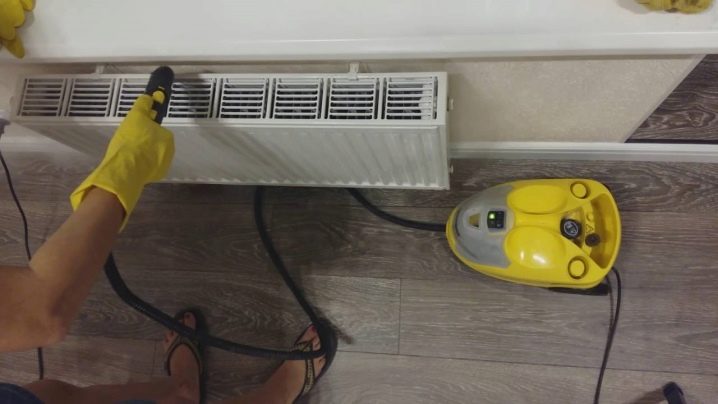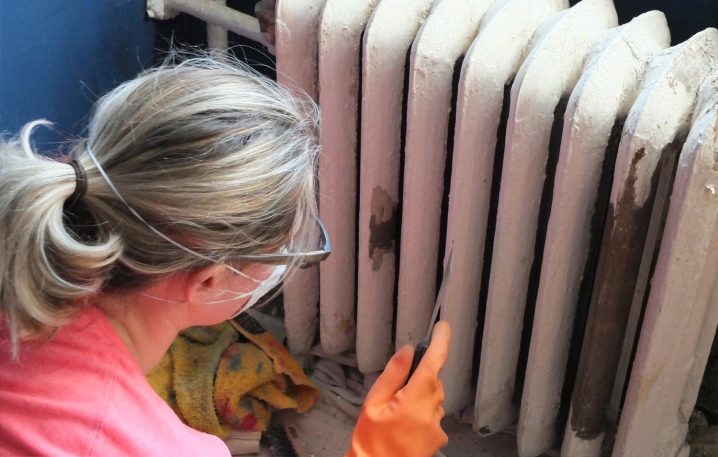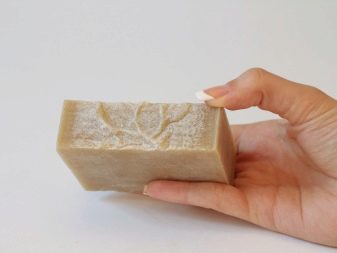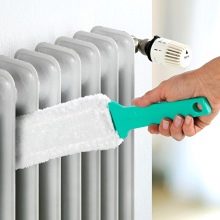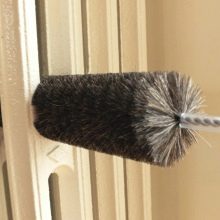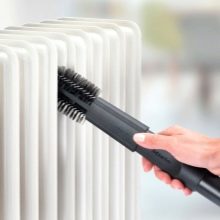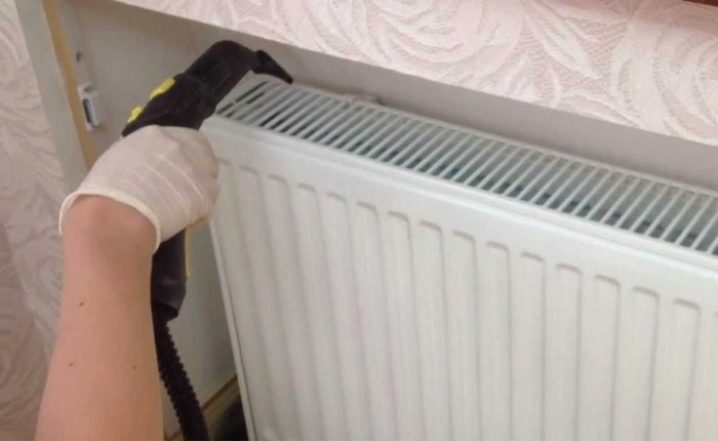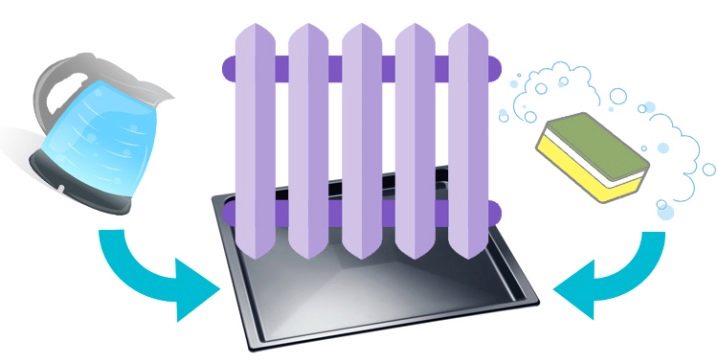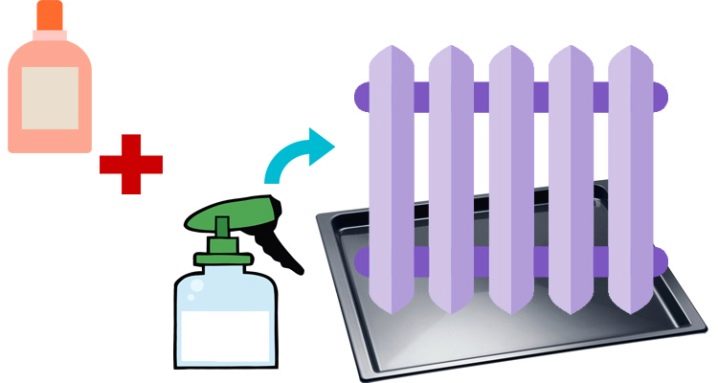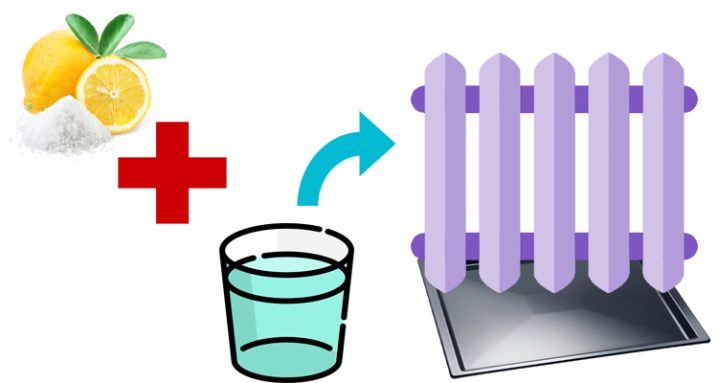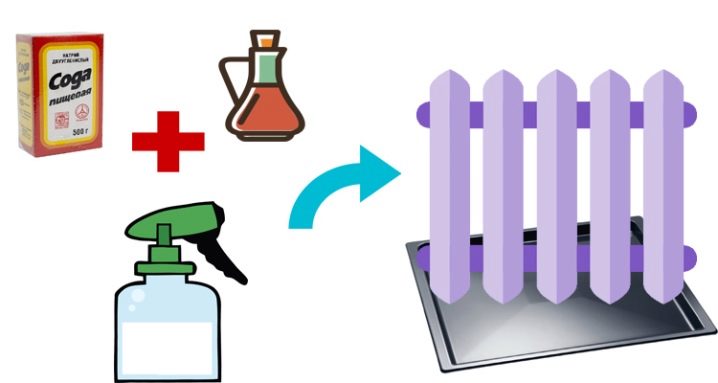How to wash the radiators inside from dust?
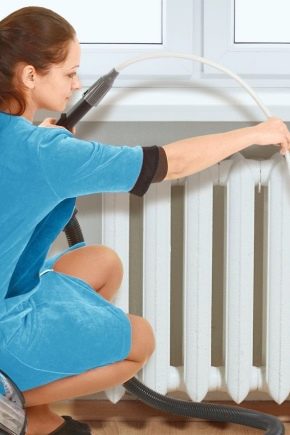
The battery of heating is among such places to which washing many hostesses approach with great difficulty. During cleaning, radiators are sometimes completely ignored, because the prospect of expelling dust and dirt from their “internal labyrinths” does not arouse enthusiasm. Although there are various and very effective ways to clean the batteries from dirt.
Why do I need to clean the radiator?
Like any place in the apartment, the heating elements require cleaning from the inside. They constantly accumulate dust, and when the windows are opened at home, it rises from the movement of air, which is unacceptable for reasons of usual orderliness.In addition, dust can adversely affect the health of all living in the apartment, so from time to time you have to get to the most inconvenient places in the heater. There are fatty contaminants on such devices, which are very difficult to remove.
In order to thoroughly wash the radiator and not damage the finishing material on the walls around it, they are covered with film or oilcloth. Also come with the floor under the heating device.
The method of cleaning itself will depend on the characteristics of the radiator device.
Special means
You can wash the battery with the help of household chemicals, which today are a great many on the shelves. It can be oxygen bleaches like "Vanisha", powders and liquid compositions, one way or another acquired for household needs. Before using a particular agent on a radiator of a particular material (cast iron, aluminum, bimetal), it is best to ensure that the use of the compound is not contraindicated in this case. Corrosive preparations can spoil the appearance of the radiator.
To the heater is not covered with rust, you can choose a special composition, preventing its appearance. It is better not to use in cleaning chemicals containing phosphates or chlorine, harmful to the human body.
Sometimes it is easiest to clean the radiator with ordinary soap - household, bath or liquid, which is diluted in water. This solution handles the entire battery.
Required fixtures
Allies in the fight against dirt on the heating elements are different devices that are usually in the house.
You can clean the radiator using:
- vacuum cleaner;
- hair dryer;
- spray gun;
- steam generator;
- brushes for washing;
- ruff for cleaning bottles;
- tassels.
Popular methods
Since radiators can be completely different in their design (from traditional cast iron "harmonicas" to bimetallic or aluminum, with external flat surfaces and ingenious arrangement of slats inside), it is necessary to use various tricks to remove dust and dirt between the sections.
Both mechanical, and chemical means of influence will approach.
Mechanical
The simplest thing is to use a vacuum cleaner with special narrow nozzles that can be pushed into the radiator compartments.This is especially effective if the battery is cleaned every time it is cleaned again, so that it will not have time to accumulate more complex dirt, in addition to dust. Civilized to solve the issue of cleaning the radiator can be, if you use a special brush designed for this purpose. It allows you to do both dry and wet cleaning of the battery.
With a large accumulation of dust, you can use a hairdryer. For the battery you need to put a wet cloth, the best is a cotton one (an old pillowcase or diaper will do), and blow the radiator with a strong jet of air. This will allow you to quickly get rid of dirt between the sections, and the dust does not scatter throughout the room.
Thorough cleaning may require boiling water. It is necessary to take a kettle with freshly boiled water, rags, a bucket and a tray (you can adapt it from the oven for a baking tray), then spill the battery with boiling water. The water accumulated as a result of this procedure in the pan remains to be poured into the bucket, and from there into the toilet. The battery itself is better to wipe with a sponge, so that there are no stains on it.
It is necessary to work with boiling water carefully so as not to burn your hands.
For washing inside the radiator, a brush or paint brushes with a bent bristle and a long handle can be useful. Also, the usual narrow brush, to the handle of which with a tape or tape, is attached a ruler. With the help of such a simple device you can get to the most remote corners of the heating device.
If there is a steam generator in the house, it will wash away the most inconvenient places in the battery from dirt, and at the same time it will disinfect the entire surface inside and outside. In the case of such a solution, it is better to very carefully protect the floor and walls from moisture, otherwise you can ruin the wallpaper and floor covering.
Chemical
To wash an accordion battery in the kitchen, it is better to use household cleaning products — you can't do it with plain water, since specific oily kitchen mud is washed off with great difficulty. The radiator can be carefully sprayed with the appropriate composition of the spray gun and left to soak. Not bad, for example, to dissolve a few drops of dishwashing liquid in water. Under the device it is better to put a rag in advance so that the liquid does not leak onto the floor. Then the sponge or rag is left to wash the plaque formed.
Folk ways
It is possible to qualitatively wash the radiators of heating, if you follow the advice of experienced housewives, since many of them act very ingeniously in this matter.
Hydrogen peroxide will help to clean and further disinfect the battery. This is especially true in homes where allergy sufferers live. The tool must be applied to a rag. Wrap a brush with a cloth (or just a stick) and methodically wipe the heater in each section.
It so happens that not only dirt accumulated in the battery, but also an unpleasant smell. This is possible if, for example, a badly washed item was dried on the heating element. In this case, citric acid will help. It is necessary to dissolve three teaspoons of funds in a glass with warm water. With such a composition, wipe the radiator from all sides and between the sections.
You can also use nine percent vinegar for washing. They wipe the battery or spray this tool on it (without diluting it with water). If there is only vinegar essence in the farm, it should be dissolved in water (ten parts of water are taken for one part of the essence). After treatment with an acidic composition, the battery should be wiped clean or simply rinsed with clean water.
You can also use ordinary baking soda dissolved in water. To be sure, this composition is supplemented with apple cider vinegar and a solution of soap. The effect of washing will be more noticeable.
Also for the treatment of batteries using chalk, dissolved in water.
To accurately reach the most inconvenient places in the battery, the hostess advise you to use soaped household gloves. They need to put on your hands, soak in soapy water and clean the dirt from the most narrow places with your fingers. If there are no gloves, you can use an old sock. If the battery is hot, unnecessary mittens will do.
To clean the most inconvenient and narrow places, some of the most patient people use a disused toothbrush.
In order not to have to resort to using clever methods for cleaning radiators, it is best to wash them every time you clean the house. This will save the battery from the accumulation of large amounts of dirt. Then the general cleaning of heating elements will have to arrange only a couple of times a year - before and after the end of the heating season.
For more details on how to wash the batteries inside, see the following video.
